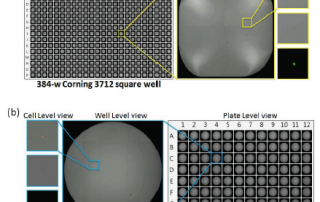Ignyta tests Celigo against Cell Titer-Glo for cell proliferation
Here's a great example of how the Celigo image cytometer is able to perform common experiments while saving time and money! Ignyta, Inc. was looking for a new way to perform reagent-free proliferation analyses with suspension cells. This new method had to produce results which correlated well to their current method, Cell Titer-Glo®. Nexcelom and Ignyta partnered to perform a head-to-head cell proliferation comparison between Celigo® and Cell Titer-Glo. Using four suspension cell types (Ba/F3 parental cell line, Ba/F3 expressing an oncogenic gene, oncogenic gene mutant A and B), Ignyta plated all cells at a concentration of 5,000 cells/well in [...]

